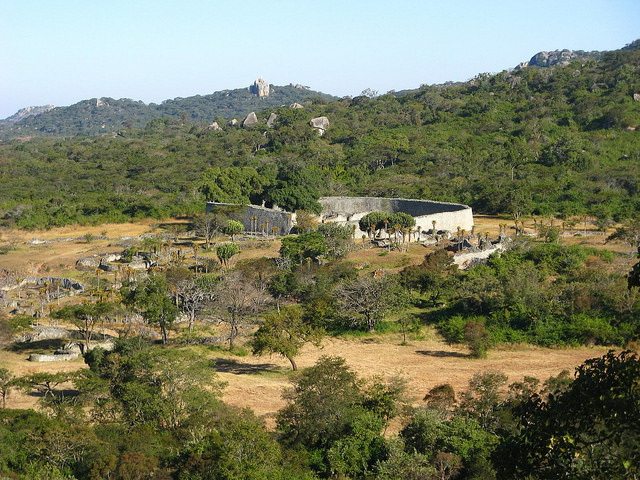 |
Great Zimbabwe |
|
|
|
Great Zimbabwe Ruins
Out of all these, the ruins of Great Zimbabwe are the largest.
Although inexpertly restored in many places, the ruins at Great Zimbabwe are still by a good margin the most impressive ancient structures in sub-Saharan Africa. They are also the source of considerable pride for present-day Zimbabweans. After all, the huge chiseled walls of the Great Enclosure, with its soaring stone tower and complex chevron patterns, are a work of high engineering skill. Much about Great Zimbabwe is still a mystery, owing in large measure to frenzied plundering of the site around 1902, but it can be stated with certainty that the Queen of Sheba never drew breath here. Instead, at any given time during Great Zimbabwe's heyday, anywhere from 10,000 to 20,000 black Africans did.
In a small museum that stands near the site nowadays, you can inspect shards of Persian pottery, a Chinese writing set and brass ornaments from Assam in India, all unearthed amid or near the ruins and all extremely old. Outside the splendid stone buildings, however, the mass of people lived in conditions resembling a modern slum. By the 16th century, when the Portuguese arrived in southern Africa, Great Zimbabwe had fallen into obscurity. No one is certain why.
Soapstone birdsThe soapstone birds are one of Zimbabwe’s symbols. They are eight birds carved in soapstone that were found in the ruins of Great Zimbabwe. These eight sculptures combine both human and bird elements. For instance, the bird’s beak is substituted by lips while its claws are changed to feet. It is unsure what the birds symbolized. The most prevalent theory is that they were the emblems of the royalty. Today, the soapstone birds can be found on Zimbabwe’s flag. |
© GreatZimbabweRuins.com - All Rights Reserved - Contact - Privacy Policy
 The granite walls - embellished with turrets, towers, platforms and elegantly sculpted stairways
- seem to have had no defensive function. But, in the words of archeologist Peter Garlake, they display "an
architecture that is unparalleled elsewhere in Africa or beyond."
The granite walls - embellished with turrets, towers, platforms and elegantly sculpted stairways
- seem to have had no defensive function. But, in the words of archeologist Peter Garlake, they display "an
architecture that is unparalleled elsewhere in Africa or beyond."